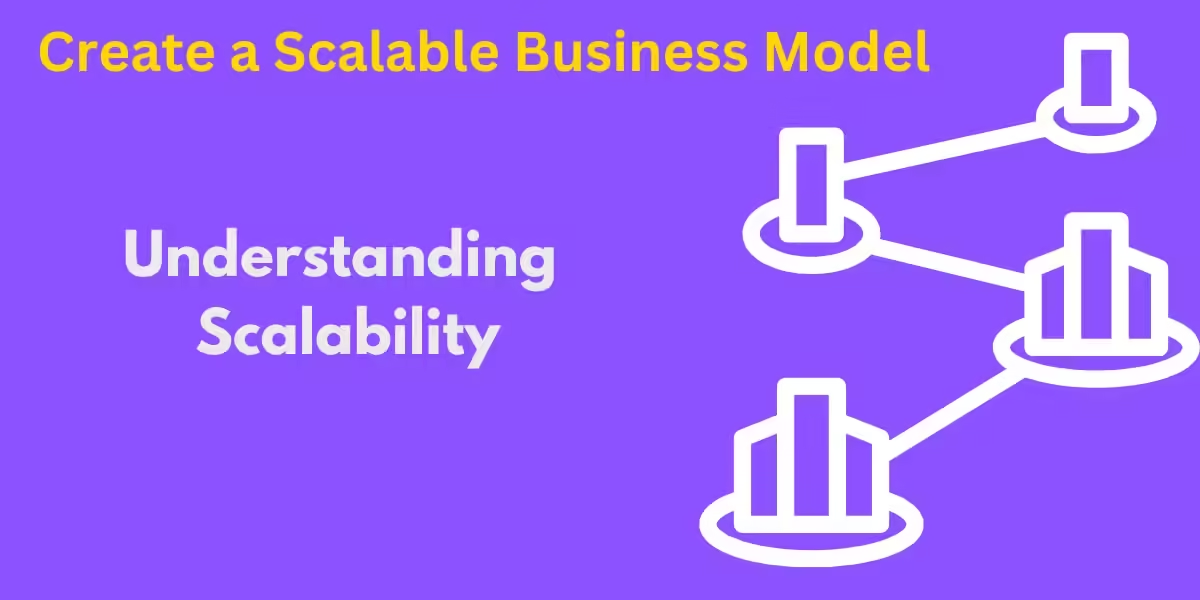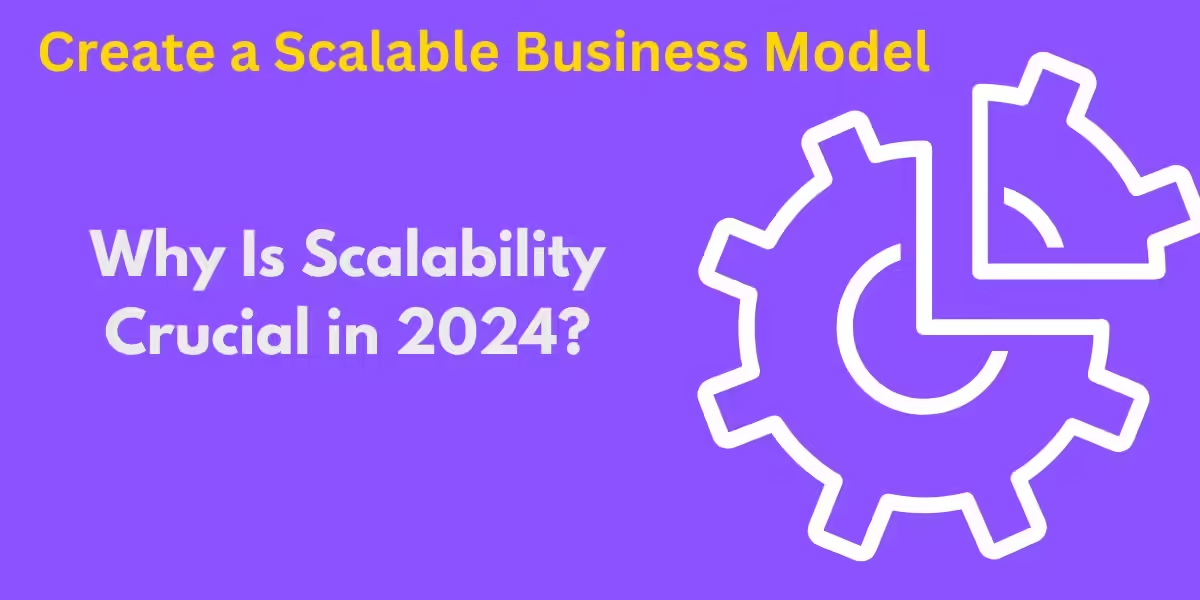Physical Address
304 North Cardinal St.
Dorchester Center, MA 02124
Physical Address
304 North Cardinal St.
Dorchester Center, MA 02124

This is A Comprehensive Guide for How to Create a Scalable Business Model in 2024, so In today’s rapidly evolving business environment, creating a scalable business model is essential for sustained growth and long-term success. With new technologies, shifting market dynamics, and the post-pandemic economy, businesses need to build models that can scale effectively while maintaining efficiency and profitability. This guide will explore how to create a scalable business model in 2024, focusing on strategic approaches, key factors, and actionable steps that can help you scale your new business effectively.
Scaling a business is often seen as the ultimate goal for entrepreneurs. However, many businesses fail to scale successfully due to poorly constructed models that cannot adapt to growth. In 2024, a scalable business model is one that can handle growth without a corresponding increase in costs. This allows a company to expand its reach, attract more customers, and generate higher profits while keeping operational complexity at bay. With the right model, businesses can thrive in competitive environments and embrace opportunities in both local and global markets.
This article delves into how to create a scalable business model in 2024, providing a step-by-step guide, real-life examples, and expert insights into what makes a business model scalable.

Scalability refers to the ability of a business to grow and expand without being hampered by its structure or resources. In essence, a scalable business model enables a company to increase its revenue while minimizing the growth of operational costs. For a business model to be scalable, it needs to meet several criteria:
In 2024, scalability also means being able to handle sudden surges in demand, especially in industries affected by trends, viral marketing, or unforeseen events.

The business landscape in 2024 presents unique challenges and opportunities. Globalization, digital transformation, and the aftermath of the COVID-19 pandemic have reshaped how businesses operate. Today’s businesses must be nimble, innovative, and capable of scaling quickly to seize emerging opportunities. Here’s why scalability matters:
Scaling your business in 2024 requires not only vision and ambition but also a robust foundation that can support growth without collapsing under its own weight. Understanding how to scale your new business is essential in staying ahead of competitors.

To create a scalable business model in 2024, it’s important to understand the key components that drive scalability. These components include:
A strong, clear value proposition is the backbone of any scalable business. Your product or service needs to offer a unique solution to a widespread problem. If your value proposition is too niche, scalability becomes difficult. Think of businesses like Uber or Airbnb, whose value propositions cater to a broad market, enabling rapid global growth.
Automation is a crucial element in how to scale your new business. The more processes you can automate, the easier it is to handle increased demand. Automation reduces human error, speeds up operations, and allows your business to scale without a proportional increase in staffing.
Some key areas to automate include:
In 2024, AI-driven automation is becoming more sophisticated, making it easier for small businesses to adopt.
Technology is the enabler of scalability. A modern, scalable business uses cloud computing, software-as-a-service (SaaS) solutions, and digital platforms to manage operations, communicate with customers, and scale services globally. Whether it’s an e-commerce platform, a data analytics tool, or an AI-based chatbot, technology allows you to serve more customers with fewer resources.
For instance, e-commerce businesses that use platforms like Shopify or WooCommerce can scale much faster than those using traditional retail models.
Partnerships are another way to scale without increasing costs. By leveraging the resources and networks of other businesses, you can expand your reach without significant investment. Strategic partnerships, such as distribution agreements or affiliate programs, enable businesses to enter new markets or serve more customers without bearing the full burden of expansion.
A scalable business has a repeatable and predictable sales process. This involves understanding your target audience, knowing how to reach them, and having a streamlined sales funnel that consistently converts leads into customers. In 2024, this also means leveraging digital marketing strategies, SEO, and paid advertising to attract more customers at scale.
Scalability requires solid financial planning. You need to ensure that your cash flow, pricing, and revenue model are aligned with growth goals. It’s important to have a financial cushion to invest in growth without overextending your resources.

Now that we’ve covered the essential components of a scalable business model, let’s look at the actionable steps you can take to build one for your business:
Your core offering is the foundation of your scalable business. Start by identifying the key product or service that offers the most value to your customers. Ensure that this offering is something that can be replicated easily and has the potential for widespread demand.
Before you scale, you need to ensure that your business operations are as lean and efficient as possible. Streamlining operations means eliminating redundancies, automating processes, and ensuring that your team is aligned with growth goals. The leaner your operations, the easier it will be to scale without friction.
Invest in the right technology from the beginning. This includes choosing cloud-based software that grows with your business, implementing automated marketing tools, and using AI-based customer service tools. Cloud technology, in particular, allows you to scale operations without large upfront costs.
Your marketing strategy needs to be scalable as well. Digital marketing allows businesses to reach a global audience at a fraction of the cost of traditional marketing. Leverage SEO, content marketing, social media, and paid ads to increase your customer base without significant increases in marketing expenses.
A scalable business needs a strong, adaptable team. Hire employees who can take on more responsibilities as the company grows and foster a culture of innovation and efficiency. As you scale, focus on building a team that is proactive in seeking out growth opportunities and solving operational challenges.
Scaling often requires an injection of capital. Whether through venture capital, angel investors, or loans, securing funding can provide the resources you need to scale quickly. In 2024, investors are particularly interested in businesses with scalable models, especially those in tech-driven industries.
Scalability isn’t just about increasing revenue; it’s about broadening your customer base. Look for new markets, demographics, or regions where your product or service can be introduced. By diversifying your customer base, you reduce risk and open up new revenue streams.
A scalable business constantly monitors its growth and adjusts strategies as needed. Use key performance indicators (KPIs) to measure growth, customer satisfaction, and operational efficiency. In 2024, data analytics tools provide valuable insights into what’s working and what needs improvement.

While scaling a business model offers many benefits, it also comes with its challenges. Common obstacles include:
By anticipating these challenges and planning accordingly, you can create a scalable business model that stands the test of time.
Creating a scalable business model in 2024 is essential for growth and success in today’s competitive market. By focusing on a clear value proposition, leveraging automation, adopting the right technology, and streamlining operations, businesses can grow exponentially while minimizing costs. Scalability isn’t just about growth; it’s about building a sustainable, efficient, and adaptable business that thrives in any environment.
Whether you’re Creating a scalable business model in 2024 requires careful planning and execution, emphasizing adaptability, efficiency, and technology integration. The article provides an in-depth guide on how to achieve this, focusing on key components like automation, technology, partnerships, and financial planning. It discusses why scalability is essential in the current business landscape, offering actionable steps such as identifying your core offering, streamlining operations, and securing funding. The conclusion emphasizes the importance of sustainability and adaptability for long-term success.